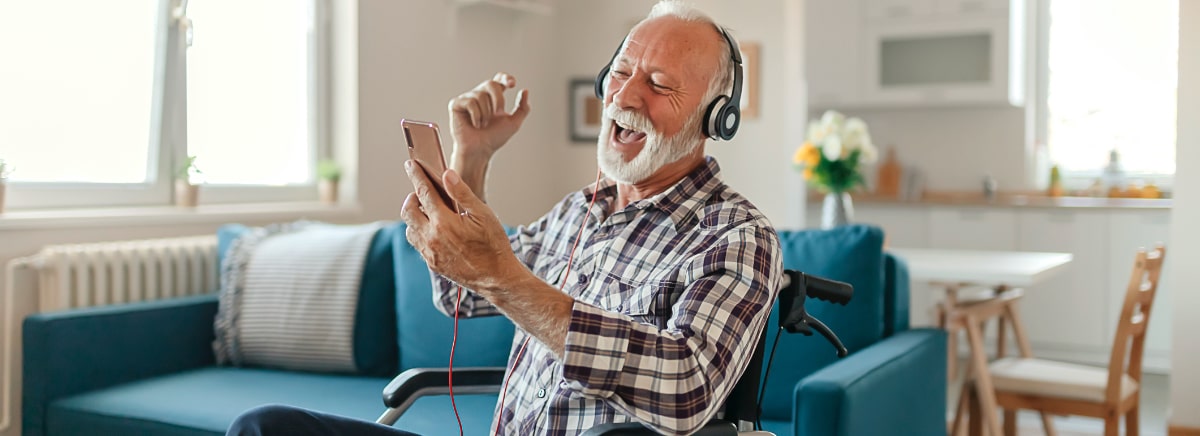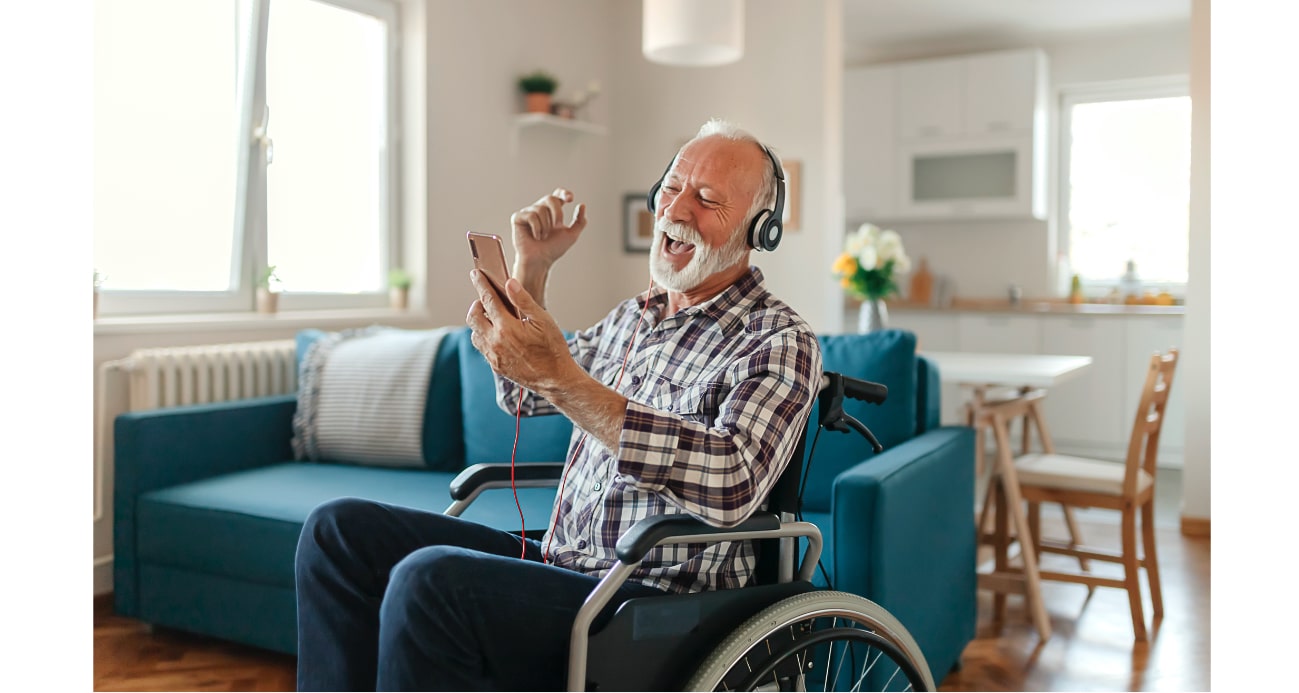Most adults over age 50 say they’re interested in “aging in place”—that is, safely growing older in the comfort of their own homes rather than in an assisted living facility. There are multiple benefits to aging in place: it is often more cost-effective, allows you to keep your long-time social connections, doctors, and other service providers, and provides more independence.
But while the benefits of aging at home are numerous, it does have its challenges. Older adults are at greater risk of falls, and safety and loneliness are concerns for seniors living on their own. Today, new technology is available to support seniors with these issues and others. Smartphones, telemedicine, wearable monitors, and other technological innovations can make independent living easier and give seniors confidence to safely and comfortably live on their own.
Tech tools for independent living
Here are a few types of technology that can make it easier to communicate, remember things, and get around safely. There are many more, and as technology advances, options will continue to grow and become more affordable.
- Medical alert devices. Wearable medical alert devices can summon assistance in case of an emergency. Options come with a variety of features, service options, and fees—they can be home-based or mobile, monitored or unmonitored, and with or without fall-detection features. Smart home assistants like Amazon Alexa and Google Home both allow you to use voice control to alert a loved one when you need help, although they cannot dial 911. Consumer Reports offers guidance for selecting a medical alert device in its article How to Choose a Medical Alert System.
- Fall detection technology. Fall detector devices have been around for a long time, but today’s technology can be worn discreetly, uses sensors to detect falls, and can automatically notify emergency contacts. There are several options; HipSafe, for example, is worn around the waist. Lively is another example that comes in a watch or clip-on option. The Apple Watch also has a fall-detection feature.
“Smartphones, telemedicine, wearable monitors, and other technological innovations can make independent living easier and give seniors confidence to safely and comfortably live on their own.”
- Fall-prevention lighting. Indoor motion sensor lights can light up a room for nighttime bathroom visits or when getting up for medication. More advanced technology such as Luna Lights uses sensors to light up a room when you step out of bed, turns lights off when you return to bed, and can send a notification to a caregiver if the lights remain illuminated for an extended period of time.
- Health monitoring technology. These tools measure vitals like blood pressure, heart rate, blood glucose, or sleep patterns. Some can securely report your results directly to your doctor. They range from devices that you wear to apps on your phone.
- Telemedicine. Using your smartphone, tablet, or computer, you and your doctor can see one another for a virtual visit. Telemedicine technology can’t replace all doctor visits but can be ideal for minor issues or routine check-ins. Your doctor’s office might ask you to download an app or may send you a link to access your appointment.
- Smartwatches. Smartwatches are popular among people of all ages but have several features that can be particularly helpful to older adults. The Apple Watch, for example, can detect falls, a high or low heart rate, or an irregular heart rhythm. It has an Emergency SOS feature that can call 911 and alert your emergency contacts. For a monthly fee, other watches like NurtureWatch and LocateWatch can track your location and report it to others using GPS technology.
- Security cameras and motion sensors. Indoor home security cameras, such as Google Nest, Amazon Link, and Arlo, can allow loved ones to check in on you through live or recorded video. If this idea makes you uncomfortable, but you’d still like caregivers to be able to monitor you remotely, home sensors that monitor movement like SafeinHome are another option. Such sensors can send alerts to a family member if you are unusually active.
- Medication reminders. Smartphones and devices like Amazon Alexa and Google Home can set reminders to take medications. Medication management apps (see below) can help with medication scheduling, doses, and track medication history.
- Mobile apps. The Pew Research Center reported that in 2019, 79% of adults ages 50 to 64 and 53% of adults ages 65 and over owned a smartphone. With that smartphone comes the opportunity for apps that can make life easier.
- On-demand services apps for rides (such as Uber and Lyft) and grocery delivery (such as Instacart, Amazon Fresh, and local grocery stores) can assist those who don’t drive.
- Medication reminder apps like MyMedSchedule and MediSafe Medication Reminder can help set medication schedules and alerts and can share information with caregivers, too.
- Communication apps like Skype, Zoom, FaceTime, and Google Hangouts can help you stay connected with loved ones.
Keep in mind that while technology can provide convenience and peace of mind to older adults and their loved ones, it’s important to carefully research the options that are best for you. Read online reviews and ask friends and family members for recommendations. To avoid frustration, choose technology that you are comfortable using, and that is easy to install. Also, ensure that your personal information is protected.
SYNERGY HomeCare is always available to help with recommending and implementing technology for aging in place. As the leaders in dementia home care in Chicago, IL, our compassionate and fully trained caregivers go the extra mile to make life as safe and comfortable as it can be for seniors. Contact us at (773) 868-3183 any time for assistance.

